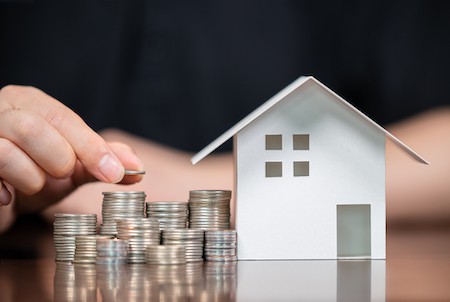In some high-cost parts of the United States, the homes seniors bought years ago for a modest amount are now worth $1 million or more, creating home equity with potential for use in retirement.
But owning a home worth $1 million isn’t the same as having an equivalent amount of money in the bank. To cash in on the rise in your home’s value, you usually need to sell — something many retirees are reluctant to do. And while looking up your address on Zillow may make you feel rich, an increase in your home’s value typically means higher property taxes and potentially higher homeowners insurance premiums, too. Modifications to make your home more senior-friendly could put additional pressure on your finances.
A reverse mortgage is one way to solve this problem. With a reverse mortgage, you can convert your home equity into a lump sum, monthly payments or a line of credit. But unlike a traditional mortgage or home equity line of credit, you don’t have to make principal or interest payments on the loan for as long as you remain in the home.
To be eligible for a government-insured home equity conversion mortgage (HECM), you must be at least 62 years old and have at least 50% equity in your home, and the home must be your primary residence. The maximum payout for which you’ll qualify depends on your age (the older you are, the more you’ll be eligible to borrow), the current interest rate and the appraised value of your home. You can estimate the value of a reverse mortgage on your home at www.reversemortgage.org/about/reverse-mortgage-calculator.
The maximum amount you can borrow through a HECM is adjusted annually, based on home prices in the preceding year. In 2023, the maximum amount you can borrow through a HECM is $1,089,300, up from $970,800 in 2022. A HECM is a “nonrecourse” loan, which means the amount you or your heirs owe when the home is sold will never exceed the value of the home. As long as you remain in the home, you retain ownership, but you’re responsible for paying taxes and insurance and maintaining the property.

You may qualify for a reverse mortgage if you still have an existing mortgage, but you must pay off the balance with funds from the reverse mortgage or other sources, such as your savings. This is probably the primary reason seniors on a fixed income apply for a reverse mortgage, says Steve Irwin, president of the National Reverse Mortgage Lenders Association. Eliminating the mortgage payment “has a huge positive impact on a retiree’s cash flow,” he says. Still, it’s important to understand that paying off an existing mortgage with funds from the reverse mortgage will reduce the money available to you from that loan.
Reverse mortgages aren’t as attractive as they were a year ago, when interest rates were at record lows. When rates rise, the amount you’re able to borrow declines.
One drawback to taking out a reverse mortgage is the up-front costs, which may include up to $6,000 in fees to the lender, 2% of the loan amount for mortgage insurance, and other fees. These costs can be rolled into the loan, but that will reduce the proceeds available to you.
Sandra Block is a senior editor at Kiplinger’s Personal Finance magazine. For more on this and similar money topics, visit Kiplinger.com.
©2023 The Kiplinger Washington Editors, Inc. Distributed by Tribune Content Agency, LLC.
See similar articles on Seniors Guide like this one: New Rules on Required Minimum Distribution.
